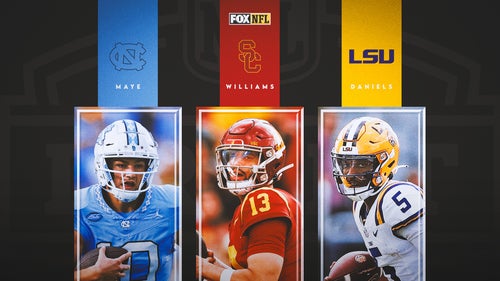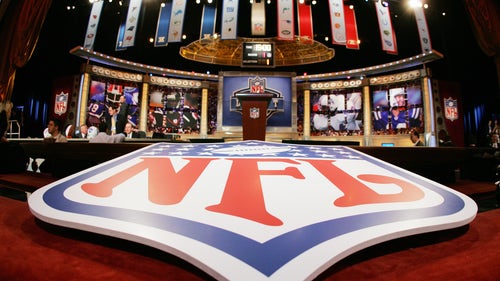





































































































































NFL overtime format gets face-lift
The NFL's traditional “sudden death” overtime format died a sudden death Wednesday at the league’s annual owners meeting in Palm Beach, Fla.
NFL owners voted to adopt the same overtime rules for the regular season that are used for the postseason.
The team that loses the overtime coin toss is now guaranteed a possession provided the club that won the toss doesn’t score a touchdown on its opening drive.
The NFL instituted the postseason overtime rule during the 2010 offseason following the 2009 NFC Championship Game between the Minnesota Vikings and New Orleans Saints. The Saints won the overtime coin toss and drove for the game-winning field goal on their first possession.
NFL commissioner Roger Goodell and members of the NFL’s competition committee believed too many teams were enjoying an unfair competitive advantage by winning the overtime coin toss and proceeding to score without the coin-toss loser receiving at least one possession.
The playoff overtime rule came into play for the first time in last season’s first-round game between the Pittsburgh Steelers and Denver Broncos. Because the Broncos scored a touchdown on their opening possession, Pittsburgh’s offense never got to take the field in OT.
The NFL also voted to make review of turnovers by the instant replay booth automatic rather than requiring head coaches to use one of their two challenges. Reviewable plays include interceptions, fumbles, backward passes recovered by an opponent or those that travel out of bounds through an opponent’s end zone, and muffed scrimmage kicks recovered by the kicking team.
A rule proposal advocating that all challenged calls get reviewed by the replay booth rather than the on-field referee didn’t pass. Horse-collar tackles on quarterbacks in the pocket are also still permitted. NFL competition committee chairman Rich McKay pointed to the fact such plays are rare and might not be preventable considering the unpredictable nature of tackling that happens during a pass rush.
“We just didn’t think this had an impact on player safety,” McKay said Wednesday morning after the vote was announced.
Other proposed rules changes that passed after receiving votes from at least 24 of 32 NFL owners:
• The banning of “crack-back” blocks on defensive players aligned more than two yards laterally outside an offensive tackle at the snap. This was aimed at improving player safety.
• Being caught with more than 11 players on the field before the snap becoming a dead-ball foul rather than a five-yard penalty that would be enforced after the play was run and time taken off the clock. This is to fill a rules loophole that was exposed during Super Bowl XLVI, when the New York Giants fielded 12 defensive players during a last-minute New England Patriots drive. There was a concern that coaches would begin illegally fielding extra defensive players to preserve a lead if there were no ramifications on the game clock.
• Illegally kicking a loose football becoming a loss-of-down penalty.
Proposed rules changes tabled for further discussion until the NFL’s spring meeting in May in Buckhead, Ga.:
• The addition of a game-by-game roster exemption for one player who has suffered a concussion and is not cleared to play. This would allow greater flexibility for clubs to sign short-term replacements without adversely affecting the roster. It also may lessen pressure on concussed players to return to the field prematurely.
• The ability to bring one designated player off injured reserve during the season after a minimum eight-week recovery period. All players currently placed on injured reserve are prevented from returning for that team during the season.
• The rescheduling of the NFL trade deadline from six to eight weeks into the regular season. The extension was designed to give teams greater flexibility to swing deals, especially those in playoff contention seeking to replace injured players or upgrade their rosters. Clubs that are out of the playoff race also might be more likely to begin early housecleaning before the offseason begins.
• The expansion of training-camp rosters from 80 to 90 players. Although the regular-season roster will remain at 53 players, one of the rule’s intents is to allow teams to better scout reserve talent that could serve as in-season injury replacements. Starters and key backups also would potentially receive less preseason wear-and-tear if more substitutes were available during practice.

2024 NFL mock draft: Michael Penix Jr. rises, Brock Bowers cracks top 10

Atlanta Falcons select Michael Penix with No. 8 overall pick in 2024 Draft

2024 NFL Draft outfits: Marvin Harrison Jr.'s necklace, Caleb Williams' nails go viral

Chicago Bears select USC QB Caleb Williams with No. 1 pick in 2024 NFL Draft

2024 NFL Draft QB rankings: Caleb Williams leads top 10 prospects

2024 NFL Draft Date, Time: Schedule, how to watch, TV channel

J.J. McCarthy among those who didn't go to Detroit for 2024 NFL Draft

2024 NFL Draft order: Updated after Round 1

'Bear Bets': The Group Chat's favorite 2024 NFL Draft bets


2024 NFL mock draft: Michael Penix Jr. rises, Brock Bowers cracks top 10

Atlanta Falcons select Michael Penix with No. 8 overall pick in 2024 Draft

2024 NFL Draft outfits: Marvin Harrison Jr.'s necklace, Caleb Williams' nails go viral

Chicago Bears select USC QB Caleb Williams with No. 1 pick in 2024 NFL Draft

2024 NFL Draft QB rankings: Caleb Williams leads top 10 prospects

2024 NFL Draft Date, Time: Schedule, how to watch, TV channel

J.J. McCarthy among those who didn't go to Detroit for 2024 NFL Draft

2024 NFL Draft order: Updated after Round 1

'Bear Bets': The Group Chat's favorite 2024 NFL Draft bets
